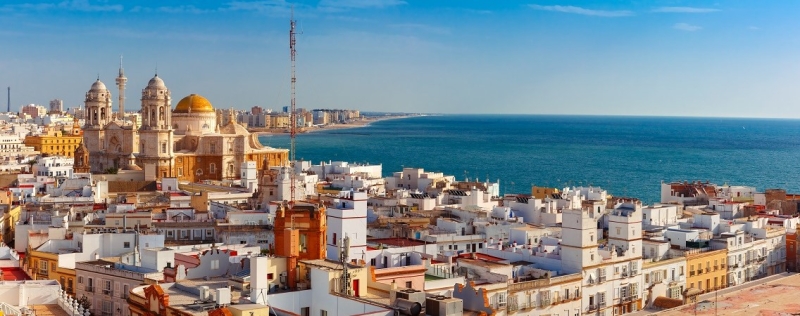
Labyrinths of narrow streets filled with history, the smells of paella and the sounds of flamenco, magnificent architecture, wide sandy beaches and the endless Atlantic Ocean – everything that Spain is so loved for is in small Cadiz.
Claiming to be the oldest city in Western Europe, Cadiz was built more than 3,000 years ago on almost the southernmost point of the continent. The Greeks and Byzantines called the city on an island, surrounded on three sides by water, the end of the world. It is connected to the mainland only by a narrow sandy isthmus, built up with multi-story buildings, and three bridges.
Entry rules
To travel to Spain, Russian citizens need a Schengen visa. You can submit your application at the Spanish Consulate or Visa Application Center. The fee for tourists is 80 euros (approximately 6,500 rubles*).
All COVID entry restrictions have been lifted.
How to get there
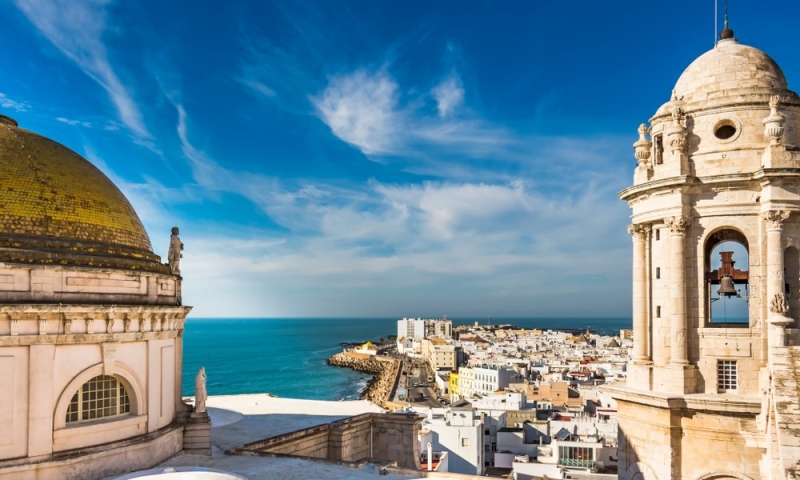
There are flights from Russia to Spain with transfers in Ankara, Istanbul or Abu Dhabi. Ticket prices from Moscow to Madrid start from 42,000 rubles one way*.
Further to the south of Spain you can get in several ways:
- by plane (to the cities of Jerez de la Frontera or Seville, tickets from 5,300 rubles one way*);
- by Renfe train;
- by Alsa bus from Seville, Granada, Valencia, Murcia and some other cities.
In Cadiz itself there are buses connecting the old city with new areas and the nearest settlements on the mainland.
Where to stay
Cadiz is a popular destination for domestic tourism, so there are many accommodation options:
Casa Caracol (rating 8.6) – hostel, from 3,200 rubles per night*.
Casual Duende Cádiz (rating 8.4) – guest house, from 8,000 rubles per night*.
Parador de Cádiz (rating 9.1) – four-star hotel, from 19,500 rubles per night*.
What to see
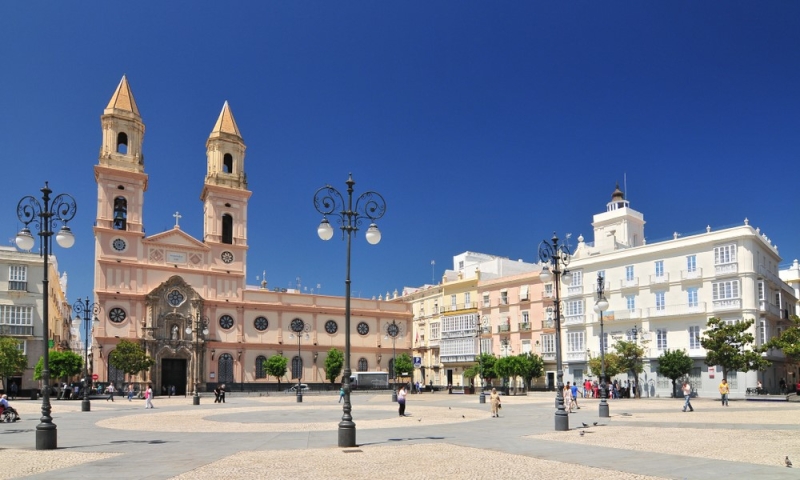
In the old fishing quarters of Cadiz, where sunlight sometimes does not penetrate, you can wander among houses closely stuck to each other for hours, forgetting that you are on a small piece of land in the ocean. And then suddenly go out onto a wide, elegant square flooded with light or a high embankment. For example, to the spacious Plaza San Antonio with the church of the same name, or the fragrant Plaza de las FloresPlaza de Mina or cozy quiet Plaza Candelaria.
The architecture of Cadiz over its long history has turned into an elegant cocktail, mixed from the cultures of the city’s many owners: Phoenicians, Romans, Byzantines, Arab Moors and, finally, the Spaniards.
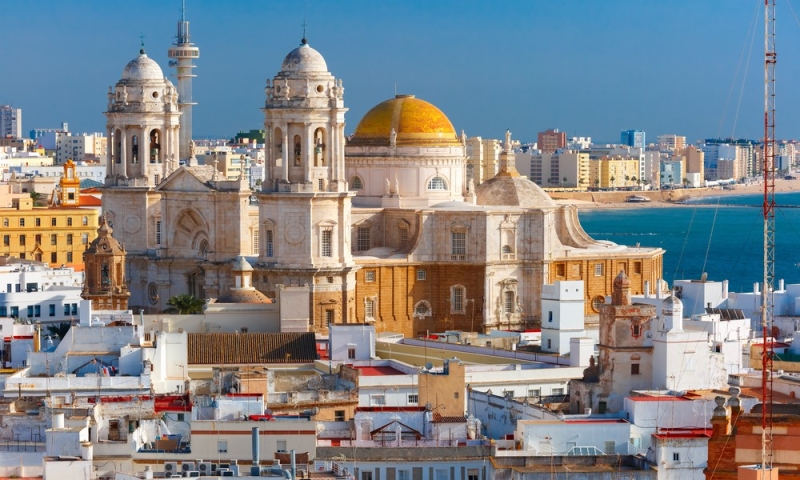
Catedral Santa Cruz – the main temple of the city – combines the styles of Baroque, Neoclassical and Rococo. It looks especially majestic and mysterious at night, when the towers stand out clearly against the dark sky. The steps of the cathedral were chosen by local youth and vacationing tourists. The square Plaza de la Catedral often hosts street musicians and flamenco singers – the acoustics there are amazing.
On the north tower there is a paid observation deck with a postcard view of Cadiz: white walls, red roofs and the blue ocean merging with the sky.
Another popular observation point is located on the tallest building in the city – the 45-meter tower Torre Tavira. In addition to magnificent panoramic views, here you can watch an impressive performance with a camera obscura. This optical device, the predecessor of the camera, is a miracle of medieval engineering.
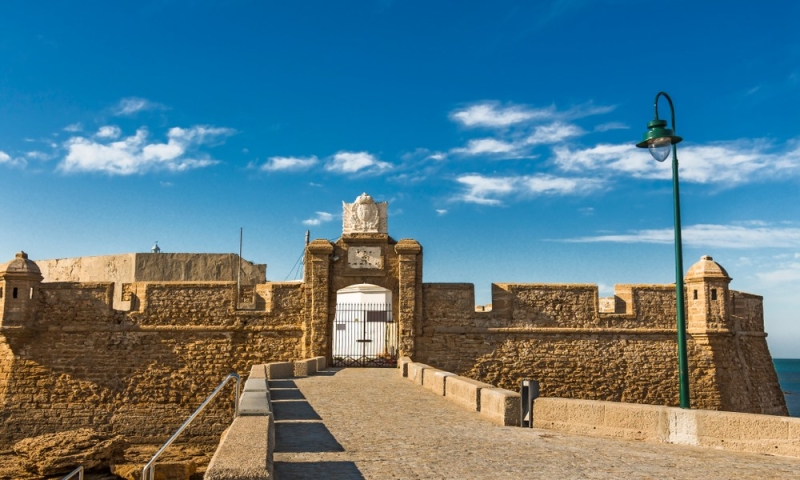
The difficult fate of Cadiz, full of turbulent battles, forced its rulers to build defensive bastions. Many have survived well to this day.
Fortress Castillo San Sebastian was built on a small island in 1706 to protect against attacks from the sea. The citadel, where the lighthouse is now located, is connected to the city by a stone dam. It’s great to sit there, admiring the Bay of Cadiz. During low tide, you can go down to the bottom and wander around the exposed rocks with a bizarre “alien” appearance.
There is another fortress nearby – Castillo Santa Catalina, designed in the shape of a regular five-pointed star, unusual for Andalusia. The citadel has remained almost unchanged since 1598. Now there are museums and halls for temporary exhibitions, educational events and master classes.
On the other side of the island, a fort similar to the bow of a ship is well preserved Candelaria. Exhibitions and concerts are held here, and often, while walking nearby, you can hear a powerful baritone flying over the bay.
Beaches of Cadiz
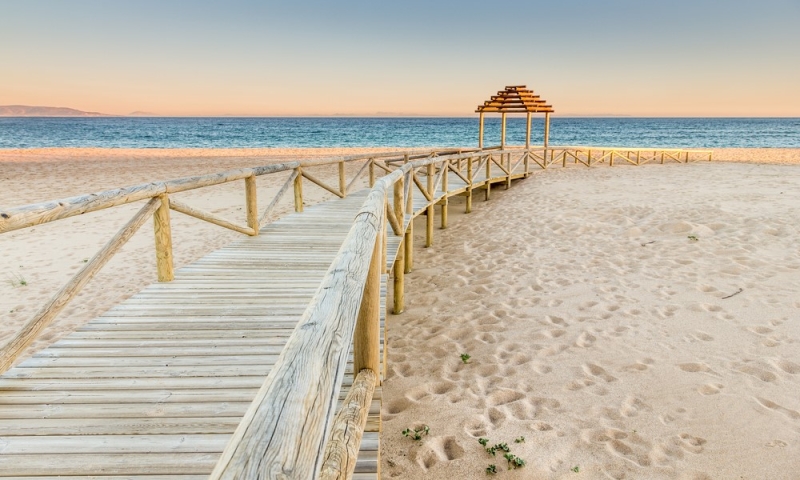
Cadiz, with its many kilometers of luxurious sandy beaches, is a Mecca for beginner surfers. There are many surf schools here, and you can often find groups of people with boards and instructors near the water. The really big waves come from late October to May, when the autumn-winter storms begin. In the summer, the Atlantic Ocean off the coast is often calm, and Cadiz is ideal for a regular beach holiday.
La Caleta Beach
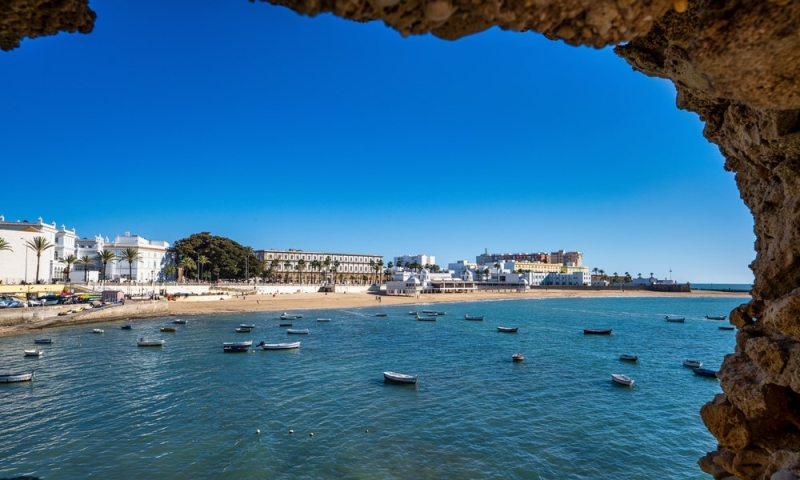
A small beach 450 m long in the bay of the northern part of the island next to the boat station. The shore is framed by the white building of the Subaquatic Center. Beautiful photos are taken against its background, and vacationers hide in the heat in the shadow of its foundation.
Algae washes up to the shore here, but there are never big waves, the entrance is very gentle, and the water, although not the most transparent, warms up much faster than on other beaches. This makes La Caleta great for families with children and those who love a calm ocean.
It is customary to celebrate the sunset here, and there is even a touching urban ritual: romantic music plays in the street speakers when the sun bends towards the water’s edge.
Santa María del Mar Beach
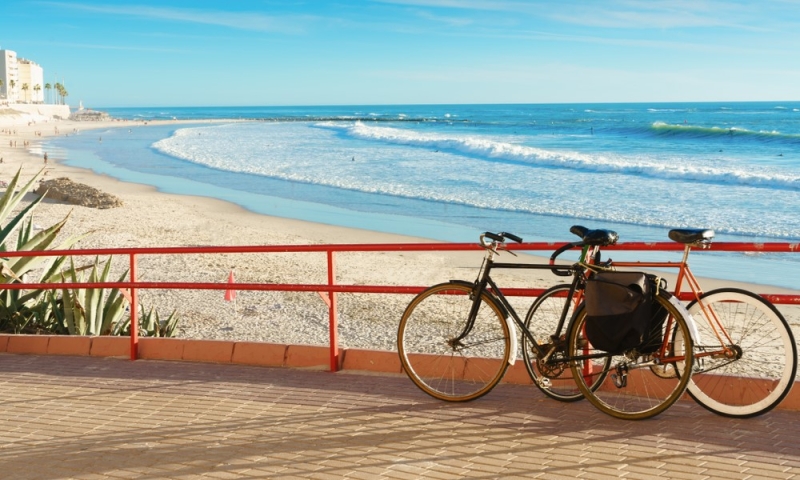
A beautiful spacious beach on the outskirts of the old city, 850 m long. Soft sand, clean, warming up to +24 ° C ocean, a gorgeous view of the cathedral and old Cadiz, breakwaters along the edges of the beach and buoys marking a large area for safe swimming, make it ideal for any holiday. There is a shower, toilet, cafe, and first aid station. And, of course, the constant, tanned merchants with carts that won’t let you die of thirst.
Tidal fluctuations are very noticeable in Cadiz. Therefore, sometimes you have to walk a couple of extra tens of meters to the water. But during low tide this beach is great for jogging or active barefoot walks.
Victoria Beach
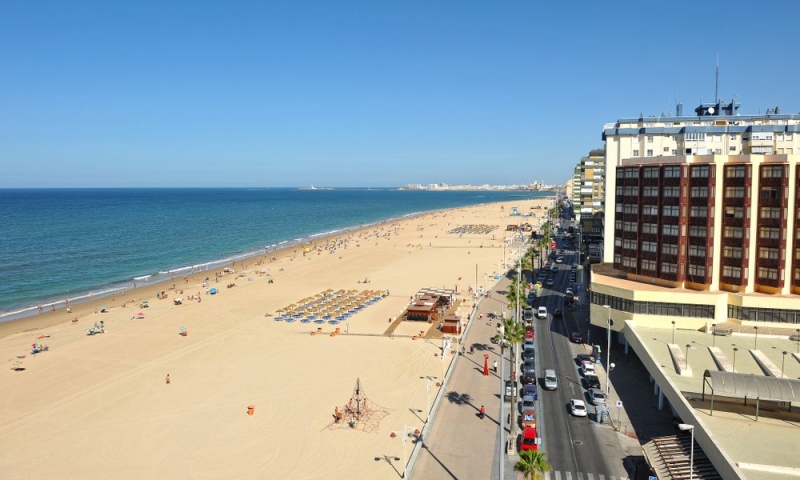
The wide three-kilometer beach is located entirely on a sandy isthmus leading to the mainland. It is one of the six best beaches in Spain and has been awarded the international award – the Blue Flag. Despite the safety, easy entry into the water and athletic-looking rescuers plying around, you should be careful here. Sailing away from the shore, you find yourself face to face with the gigantic Atlantic Ocean with its difficult temperament and underwater currents.
At night, during low tide, the lights of lanterns wandering far from the shore are often visible here. These are local fishermen collecting sea life from the exposed bottom.
Cortadura Beach
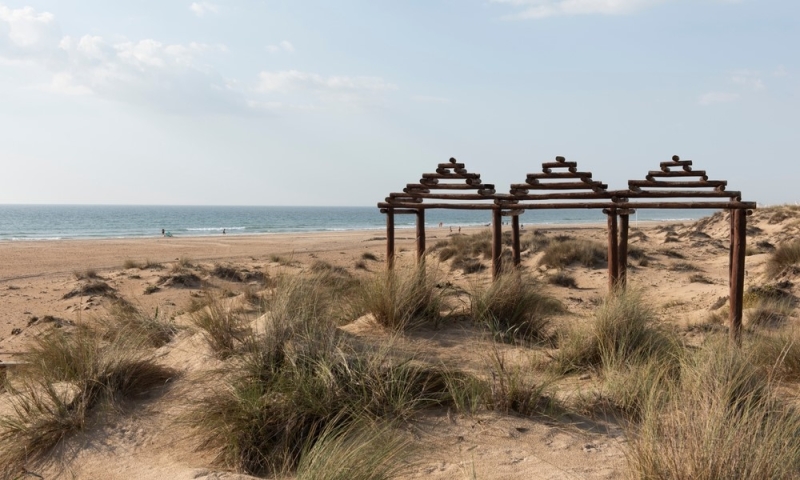
A beach with golden sand in the suburbs of Cadiz, stretching along the highway for 4 km. It is separated from the road by a strip of trees and bushes. There are no restaurants, shops or crowds of loud tourists. This place is suitable for a secluded, relaxing holiday, and the rocky areas are good for quiet snorkeling.
All Cadiz beaches are free, but you will need to pay extra for sunbeds and umbrellas.
Places for long walks
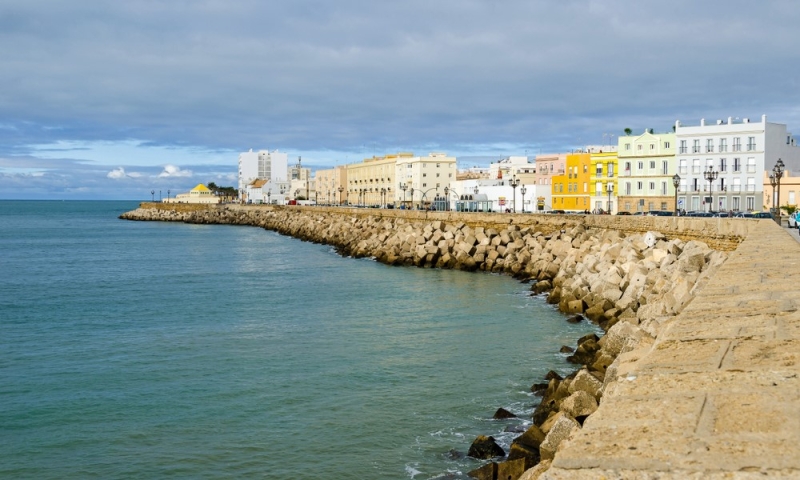
Almost all of Cadiz can be explored by walking along the promenades and embankments along the ocean. Even if you get lost in the nooks and crannies of the old city, sooner or later you will come to the water. And on the embankment it will be easier to understand where to move in order to get to the right point.
A long walk with picturesque views can be arranged starting from La Caleta beach towards Sta beach. Maria. The promenade on the street Campo del Sur goes along a high fortified bank. From there you can see the sparkling ocean to the horizon, and in bad weather the splashes of waves crashing against the wall reach passers-by. Fishermen with long fishing rods often sit here, giving compliments to girls walking by. And street cats hide between the stones, fed by compassionate townspeople.
After the beach Sta. María walk along the coast can be continued along the promenade Paséo Marítimo until you leave the new city.
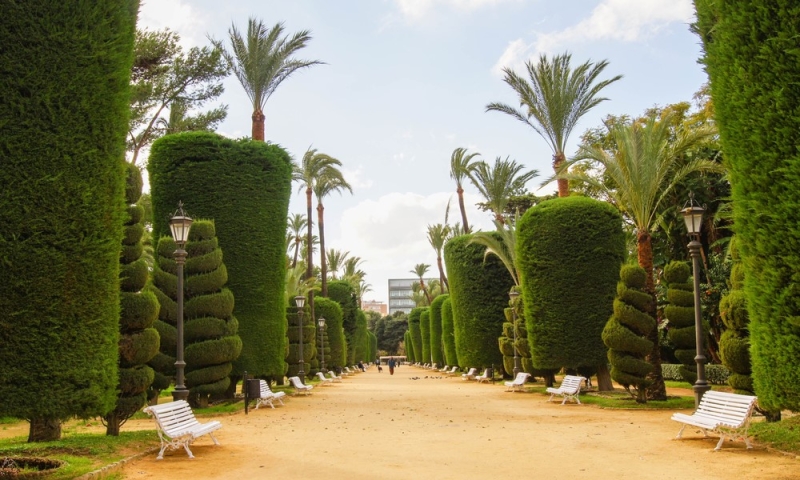
If you go in the other direction from La Caleta, the path will lie along the Bay of Cadiz along the promenade Paséo Santa Barbara.
There is also a park Parque Genovés – a garden where more than 300 species of trees and flowering plants grow, there is an artificial pond, a waterfall and a grotto. But the most interesting thing here is the curly haircuts of the crowns of trees and shrubs, giving them bizarre shapes.
After walking a little further along the embankment, you will find yourself in a secluded park Alamedawith huge ficus trees, among the roots and curved trunks of which unusual photographs are obtained. The park is decorated with black and white paving tiles, fountains and traditional Spanish ceramics – azulejos, which Cadiz inherited from the Moors.
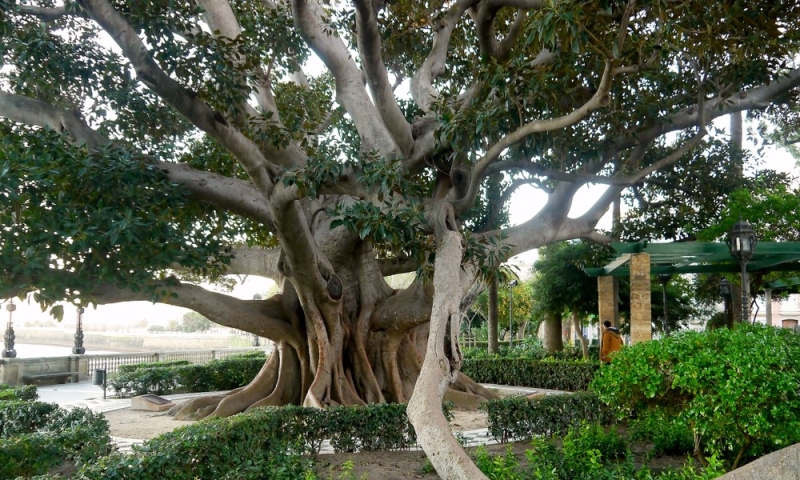
Fishermen and local teenagers also gather on the embankment in this area in the evenings. From the promenade you can watch multi-story cruise ships moving towards the horizon, leaving the parking lot in Cadiz port. At night, the lights of other cities on the mainland are visible in the distance.
Moving further along the bay, you will encounter more and more landscapes with silhouettes of port cranes and fewer and fewer passers-by and tourists. This unpopular place for walking is a good place to wander after sunset: the roar of the city is drowned out by the sound of the waves, and bright stars are shining overhead.
Cafes, restaurants, bars, shopping
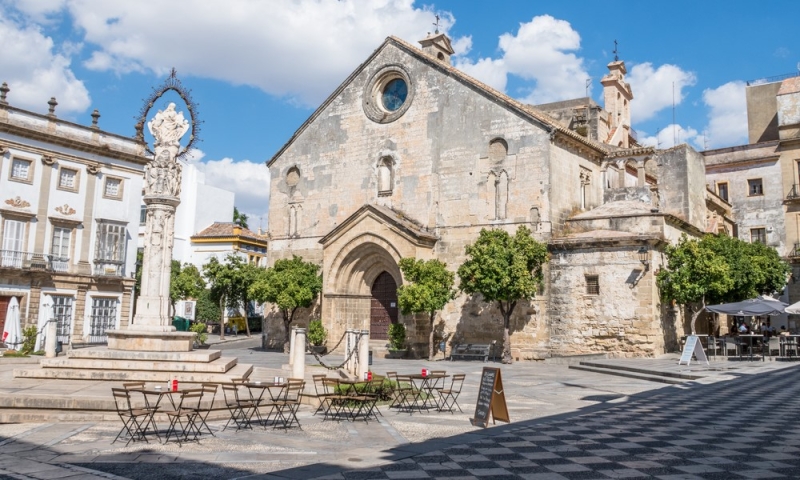
Cadiz is replete with interesting places where you can eat deliciously without breaking your vacation budget for the evening:
- market Mercado at Plaza Libertad with fresh seafood, fruits and vegetables;
- tapas bars at Calle Zorilla;
- restaurant Balandro, where the bar serves restaurant food from the chef at affordable prices;
- Cafe Libreria La Clandestina with the best carrot cake in Cadiz;
- restaurants with beautiful terraces on Calle de la Palma;
- supermarket chains Mercadona, Día, Carrefour, where there are always high-quality famous Spanish cheeses and jamon.
Bars where you can noisily relax with your company in the evening and inevitably make new acquaintances are located on Calle Sagasta and nearby.
A pedestrian shopping area with mass market stores and famous Spanish and world brands stretches along the streets of Calle Sacramento and Calle Columela. And small craft shops with authentic items are hidden in the alleys near the main cathedral.
Please note that townspeople reverently honor the traditions of their favorite siesta, and during the day, during the heat, many establishments, including restaurants and grocery stores, may be closed. The cafes fill up with talkative Spaniards around 9 pm.
Entertainment and cultural program
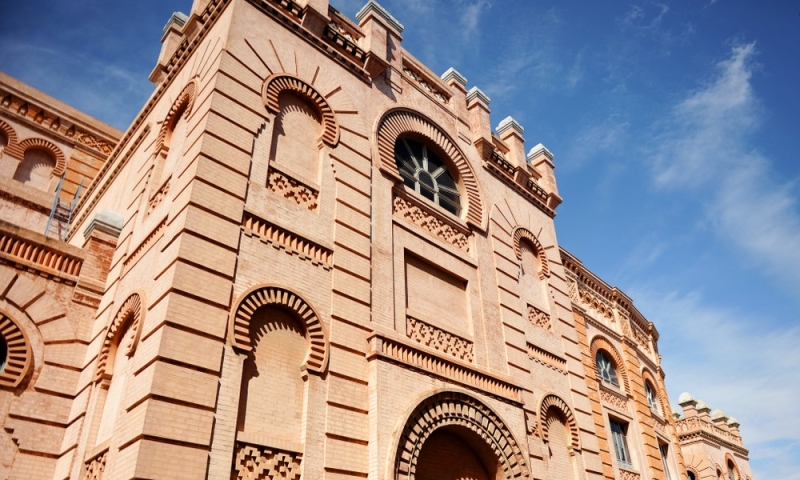
The main event in the city, for which residents diligently prepare all year long, is the colorful February Cadiz Carnival,famous throughout Spain. There are many musical groups and ensembles in Cadiz. In the summer, while rehearsing right on the street, they practice singing, playing instruments and walking at the same time. So don’t be surprised if somewhere on the embankment or in a secluded alley a wind orchestra, a male choir or a drum ensemble comes out to meet you, performing world and Spanish classics. The music, reflected from the ancient walls of the city, sounds fascinating.
Cadiz is rich in museums and theaters:
- Great Teatro Falla (Teatro Falla);
- puppet theater (Teatro Tía Norica);
- Cadiz Museum (Museo de Cadiz);
- archaeological museum (Yacimiento Arqueológico Gadir);
- Cadiz History Museum (Museo de las Cortes);
- museum of puppets and lithographs (Museos del Titere y Litográfico);
- remains of an ancient Roman theater (Teatro Romano);
- space of modern culture (Espacio de Cultura Contemporánea de Cadiz ECCO).
You can listen to Spanish guitar and traditional flamenco in many theatrical bars in Cadiz: Peña Flamenca la Perla de Cádiz, Taberna Flamenca La Cava, Café Teatro Pay Pay. Some concerts are free, sometimes they are moved to free venues on the embankment.
There are often open exhibitions in the city center, for example, on the walls of the Mercado market building works of Spanish and European artists and illustrators are displayed.
Cadiz is definitely one of those cities whose atmosphere you will be drawn to dive into again and again.
*Prices are current at the time of publication.

